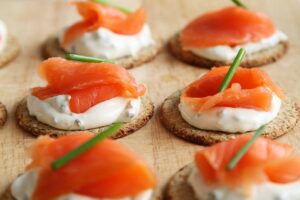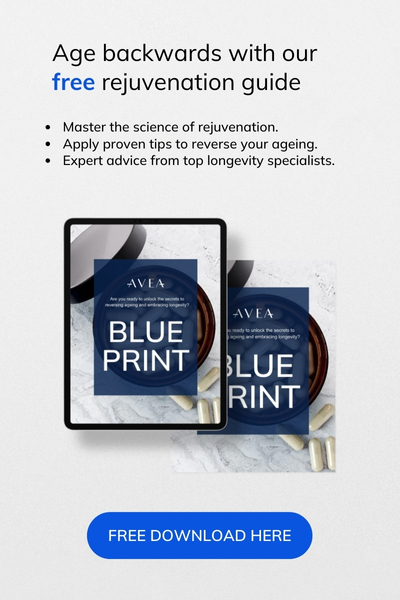Nutrition and fasting are intimately connected. Tapping into our body’s nutrient-sensing networks through fasting, can unlock a wealth of benefits, from weight loss to improved insulin sensitivity, as well as biological age reversal.
In this article, we will explore the science behind fasting, and what you need to fast properly and safely. The trick is to find the sweet spot which does not cause unnecessary stress or worsen micronutrient deficiencies in your body. As with any powerful tool, optimality is seldom found at extremes.

Diet can reprogram your body and put it on a path to live longer.
In this article
Free guide to reverse your biological age

- Master the science of rejuvenation.
- Apply proven tips to turn back the clock.
- Transform your health with top longevity specialists.
Fasting and hormesis
Fasting is a form of hormesis as it involves a temporary stressor or challenge to the body. When the body is deprived of nutrients and energy, several stress response pathways are activated, which can improve cellular health and longevity. Hormesis promotes adaptation and resilience, which can protect against the negative effects of chronic stress and ageing.
The science behind fasting
1. Your body’s ageing defence pathways
Restricting protein and sugar intake through fasting have been shown to inhibit growth signalling pathways that cause cellular damage and lead to ageing.
Fasting also activates our repair signalling pathways, essential to help prevent the onset of neurodegenerative diseases, such as Alzheimer’s and Parkinsons or cancer.
It also stimulates the production of human growth hormone (HGH). Higher levels of HGH are associated with increased muscle mass, improved bone density, reduced body fat, and better insulin sensitivity.
2. The promise of sirtuins (SIRTs)
During fasting, the body undergoes metabolic changes including a decrease in blood glucose levels, an increased production of ketone bodies, and a reduction in insulin and IGF-1 levels.
Sirtuins respond to such changes by promoting cellular processes that enhance survival and repair. Studies have shown that sirtuin activation through fasting or caloric restriction can increase lifespan in yeast, flies and mice.
How to perform the right type of fasting
Intermittent fasting (IF)
Intermittent fasting is an eating pattern that cycles between periods of eating and fasting. It usually includes a low or zero-calorie period, followed by a normal feeding period lasting between 12 and 48 hours. IF can be performed through:
- Complete water-only fasting
- Alternate-day fasting (ADF)
- 70% energy restriction every other day
- The 5:2 diet
- Time-restricted feeding (TRF), which restricts food intake to 6–12 hours per day
The sweet spot: 12 hours on, 12 hours off
Dr. Valter Longo, biogerontologist and cell biologist, suggests that to benefit from fasting, it’s essential to fast for the right duration.
He suggests eating within a 12-hour window each day (e.g. from 8am — 8pm) and fast for the other 12 hours. Fasting longer than 12 hours may cause gallstones and reduce lifespan.
‘’So if you are fasting for 16 or more hours each day (e.g. following the 16/8 Intermittent Fasting method), you should reconsider your approach. When people fast too often, they seem to live shorter lives”
Dr. Valter Longo.
Skipping breakfast, a trend amongst intermittent fasters, might be problematic. ‘’People that skip breakfast may live shorter, but eating all day and snacking at night is also a problem.
Those who eat for 15, 16 hours a day, also start developing health issues as they might be overweight, obese, and develop insulin resistance. 12 hours on, 12 hours off seems to be the sweet spot, with only positive results so far’’, he says.
Periodic fasting (PF)
Periodic fasting refers to a severely calorie-restricted or water-only fasting period that lasts between 48 hours and one week. It can be practised at specific intervals or on an as-needed basis.
Periodic fasting needs further attention than intermittent fasting. It should not be performed more than once every two weeks. In a year, limit the number of times to not more than four days.
Such a type of fasting can be achieved through water-only fasting or a fasting-mimicking diet (FMD), a plant-based diet that mimics the effects of water-only fasting on specific biomarkers.
The Sweet spot: 3 days fast, every month or season
Assuming that you are in good health and have consulted with a healthcare professional, the best way to reap the benefits of periodic fasting is, to fast every month or every new season for 3 days.
Proper ketosis is achieved after a minimum of 2–3 days of fasting, and ketones have various health benefits, such as reducing inflammation, improving brain health, and metabolism.
During this period, the body enters proper ketosis, induces strong autophagy, and reboots stem cells and the immune system.
3 days seem like the sweet spot for various healthy and beneficial effects to spring into action. Extended periods of fasting, on the other hand, can be detrimental to health.
Intermittent fasting, periodic fasting, and ageing-related diseases
Ageing is the major risk factor for diseases, including cancer, diabetes and neurodegenerative, cardiovascular and immunological diseases.

A number of studies are investigating the potential of fasting in preventing or treating such age-related diseases in humans.
Incorporating a well-planned fasting regimen has been shown to have significant benefits to overall health and well-being, providing protection against various age-related diseases. Yet, it’s still not for everyone.
Who should not perform fasting
Fasting is not a one-size-fits-all solution. Extended periods of fasting can even aggravate health by causing dehydration, electrolyte imbalances, hypoglycaemia, malnutrition and muscle loss.
Besides, scientific studies show quite opposite results in males and females— most positive results come from studies carried out in men, whilst study in women are still new.
Physiological changes associated with the menstrual cycle affect the body’s response to external stimuli, as biology plays a huge part in shaping male and female metabolic responses.
It might be optimal to stay away from intermittent fasting if you:
- are pregnant
- are chronically stressed
- do not usually sleep well
- are new to diet and exercise
- have a history of disordered eating
In other cases, you could still feel out how you react to fasting by practising it at different times of your menstrual cycle. We recommend a milder approach, and to make sure you consult with your physician before jumping into any strict dieting plan.
Fasting mimetics— NAD+ precusor
NAD+ precursors might take home the ‘’supplement of the year’’ trophy this year. It is a fasting-mimetic— a natural coenzyme that holds metabolic benefits similar to fasting.
NAD+ plays a critical role in our energy production. Increasing its levels through supplementation have been shown to induce hormesis, thereby providing insulin sensitivity [1], increased fat burning [2], and protection against various chronic diseases [3].

At the cellular level, both fasting and increasing NAD+ levels, activate sirtuins, our longevity genes.
Sirtuins promotes cellular processes, such as DNA repair, autophagy and mitochondrial biogenesis. This results in lower inflammation, enhanced mitochondrial function, and reduced oxidative stress.
Key takeaway
The scientific literature robustly advocates for fasting’s multifaceted benefits on human health. Whether it’s intermittent, time-restricted, or periodic, fasting acts as a cellular tune-up, rejuvenating repair mechanisms.
Besides, fasting has the ability to improve metabolic markers and may offer neuroprotective benefits. But, as with any menu, choices must be made wisely. A consultative approach with healthcare professionals ensures personalised health outcomes.
For those seeking similar perks without prolonged fasting, supplementing with NAD+ precursors offers an innovative shortcut.
References
















